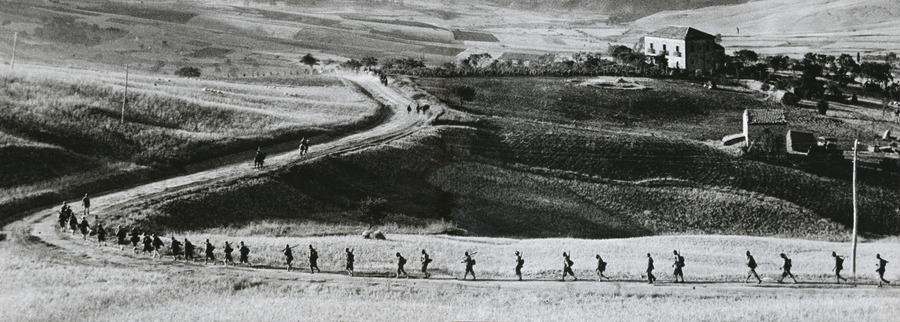
Robert Capa was a Jewish-Hungarian photographer that became world famous with his pictures from the Spanish Civil War (1936-1938).
Capa's motto was "If your photographs aren't good enough, you're not close enough". No wonder he died by stepping on a mine.
I like very much how he showed the life of everyday people in the middle of war. That is my reason to search for his battlefields when I travel around in Europe.
In July and August 1943 Robert Capa followed the American troops across Sicily.
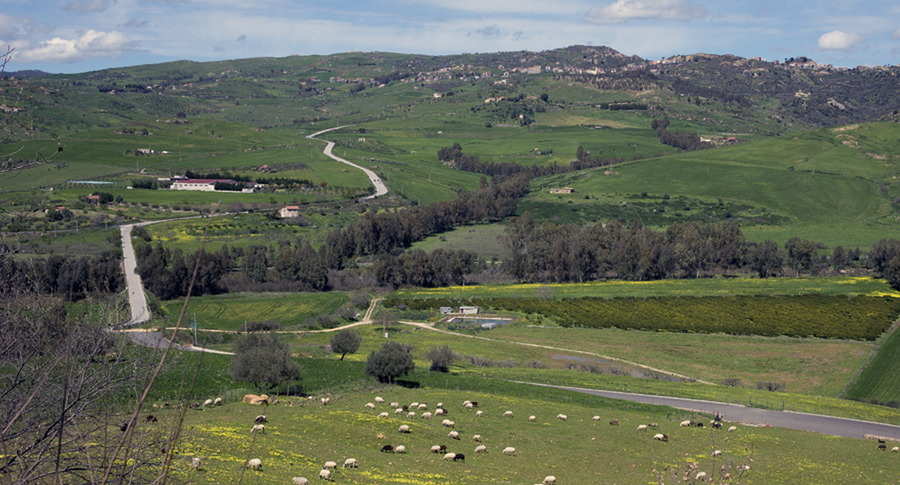
The American troops went along Highway 22 from Agira to Troina. The valley is 1,000 metres above sea level.
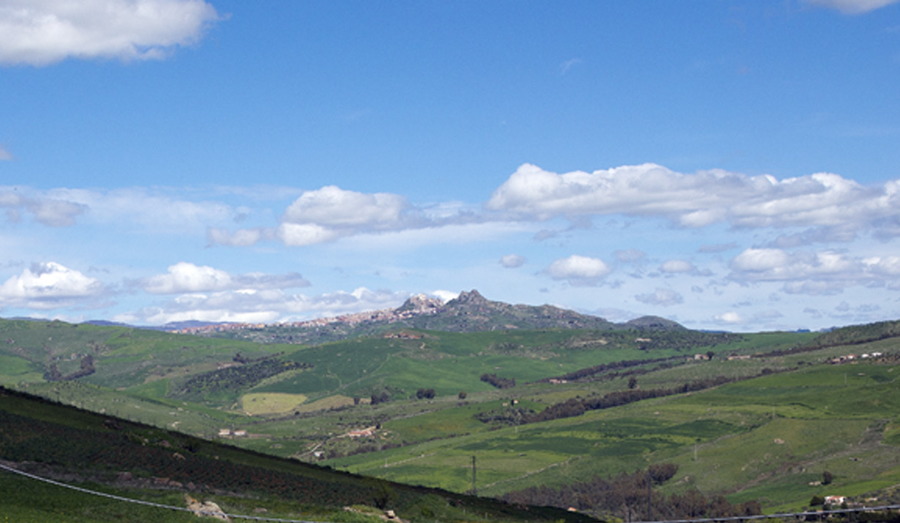
Troina seen at a distance. The town has been fortified since the Norman King Roger II (1095-1154).

American soldiers marching towards Troina 4 or 5 August 1943.
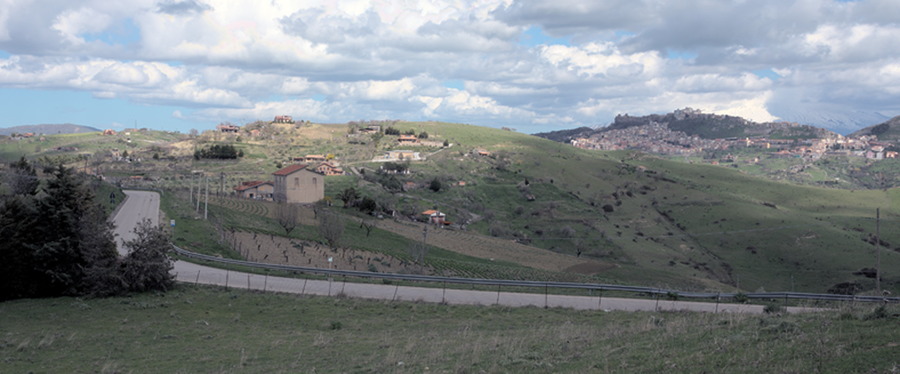
I never found the place. The photo could have been taken here - if the highway bend has been straightened after the war

American soldiers beeing greeted in Troina, 6 August 1943
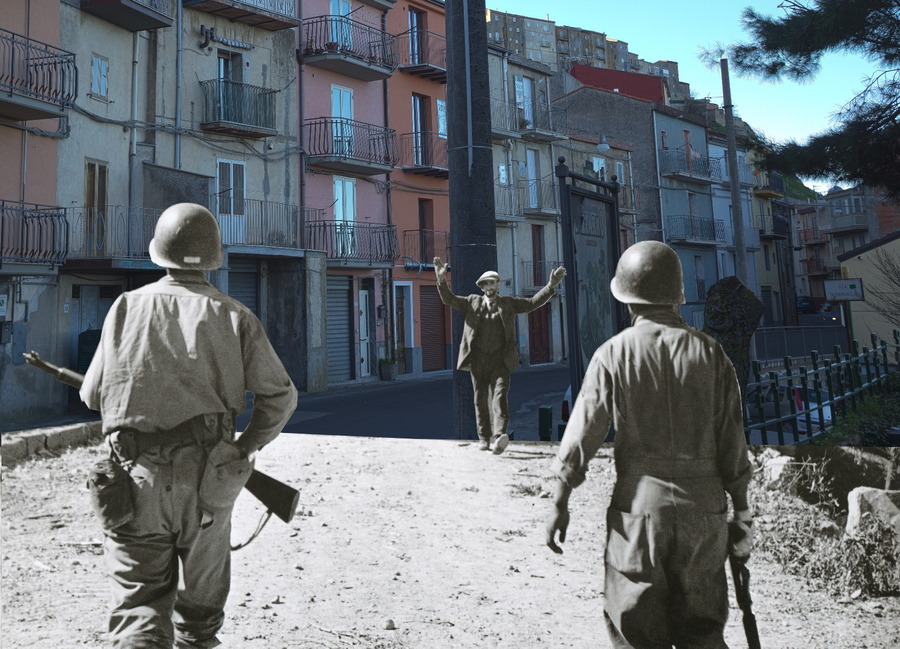
The photo is taken in Via Nazionale, Troina
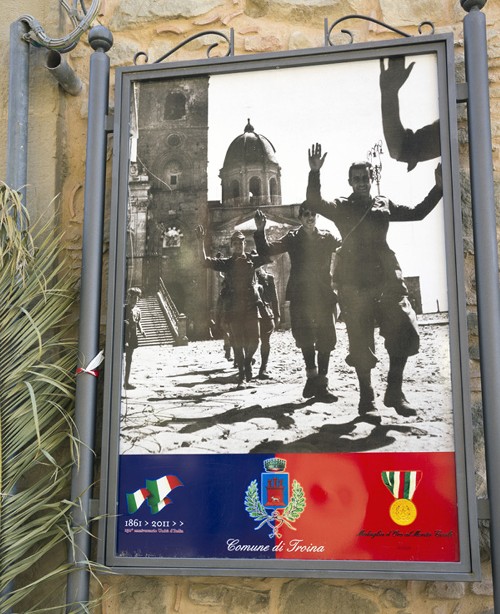
The Troina township displays historical posters in the old city. Here are German soldiers captured by the Americans in 1943. They look relieved.

There has been a lot of discussion in the Sicilian towns Sperlinga and Troina whether this Capa photo was from Sperlinga or Troina.
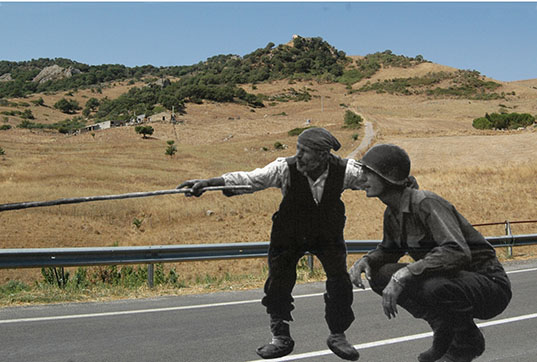
Toto Scalisi found the hilltop at a place called "contrada Capostrà" near Sperlinga. Rosimari Virgilio combined the two photographs.

The Americans fighted their way through Agrigento. Capa made this photograph somewhere in the old town. However, I never found the place.
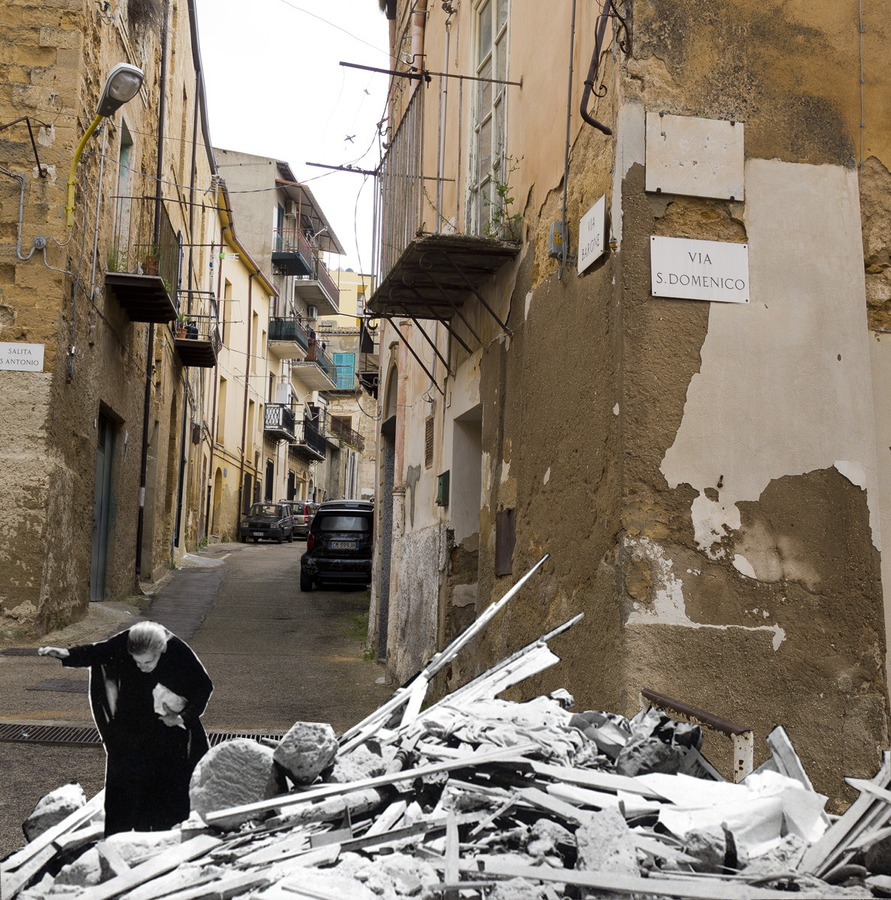
Where in Agrigento is Capa's photo taken? Not in Via San Domenico.
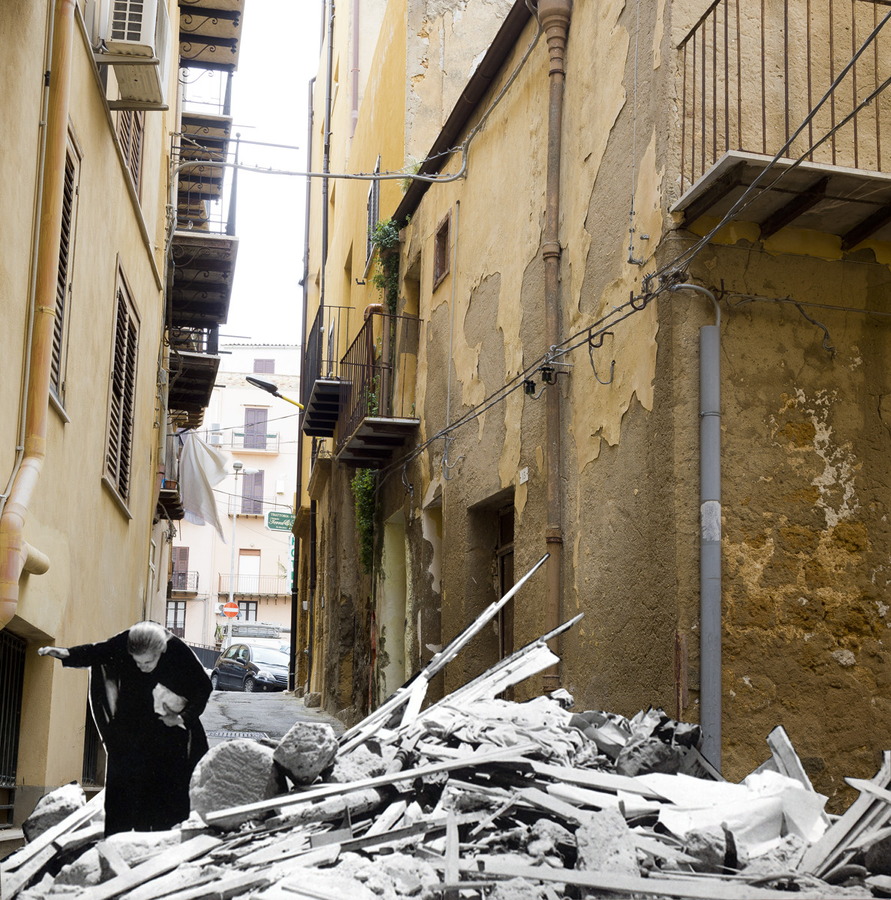
Not in Via Neve
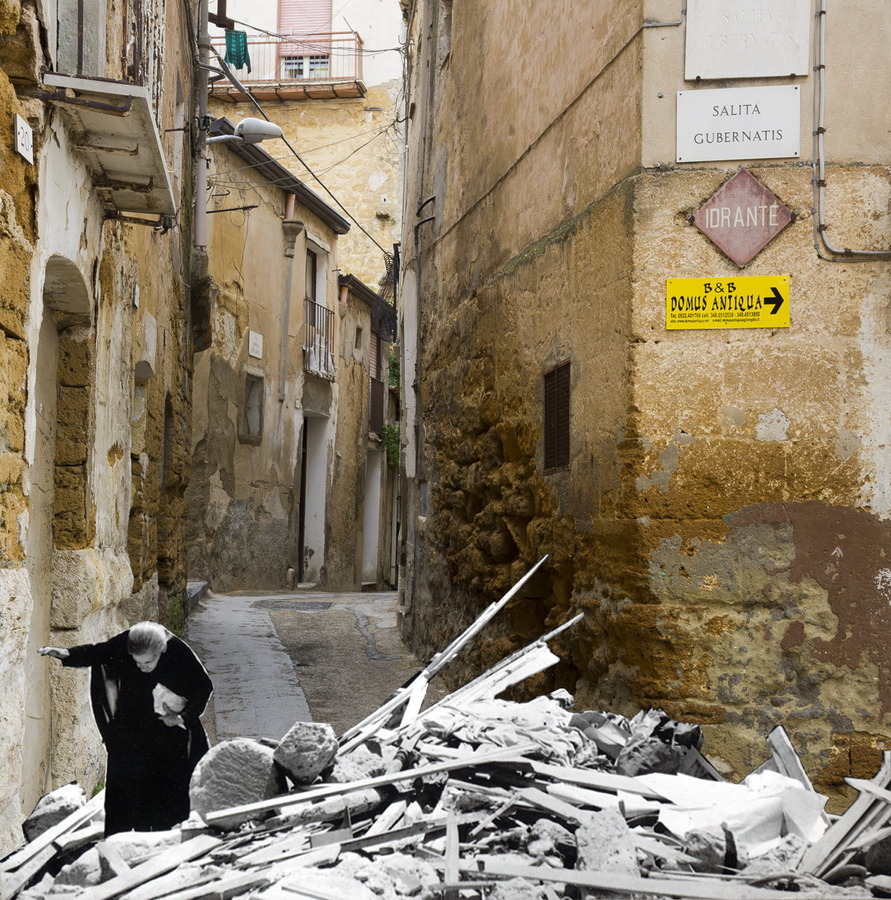
- and not in Salita Gubernatis either, even though there is an "Idrante" (fire hydrant) sign on the corner as on the original

The Canadian troops met heavy German resistance near Agira, and 300 Canadian soldiers died. They are buried near lake Pozzillo with a view to the Etna volcano (3,300 metres).
When the Soviet Army attacked the German forces through Poland in 1944, they stopped outside Warsaw and waited while the nationalist uprising in Warsaw was going on.
The Germans made an end to the uprising, expelled the population and demolished all buildings in the Polish capital.
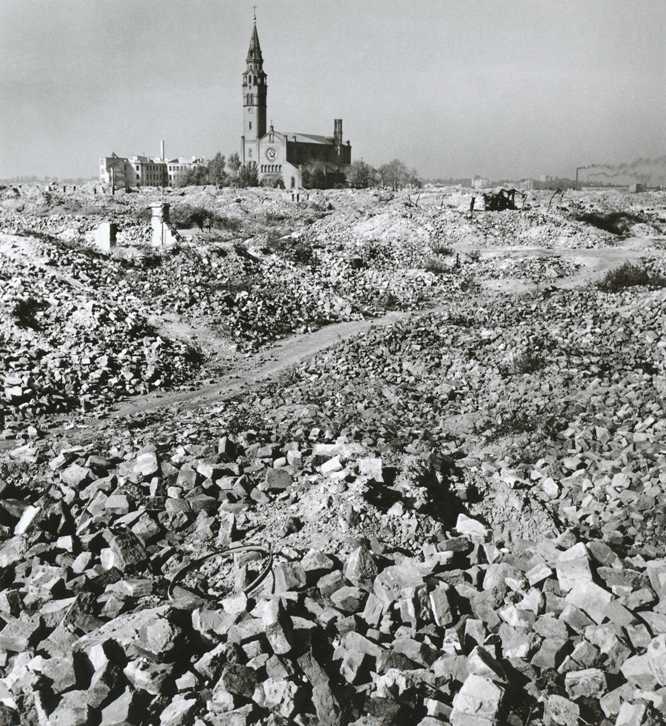
Robert Capa's photo from 1948 with a single church standing in Warsaw

Now Warsaw is rebuilt, and it is difficult to make a proper photograph of the church.
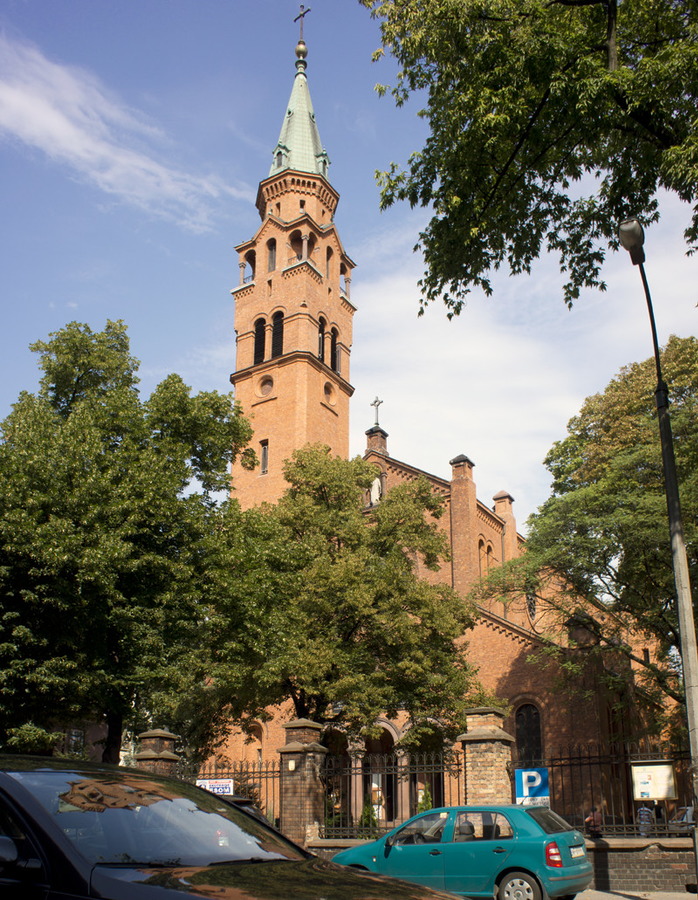
All black-and-white photos are made by Robert Capa. They stem from the book "Robert Capa / Fotografias", Aperture, Madrid, 1996, which I recommend.
All colour photos by Ebbe Munk except the Sperlinga photo which is photographed by Toto Scalisi and combined by Rosimari Virgilio, thanks!